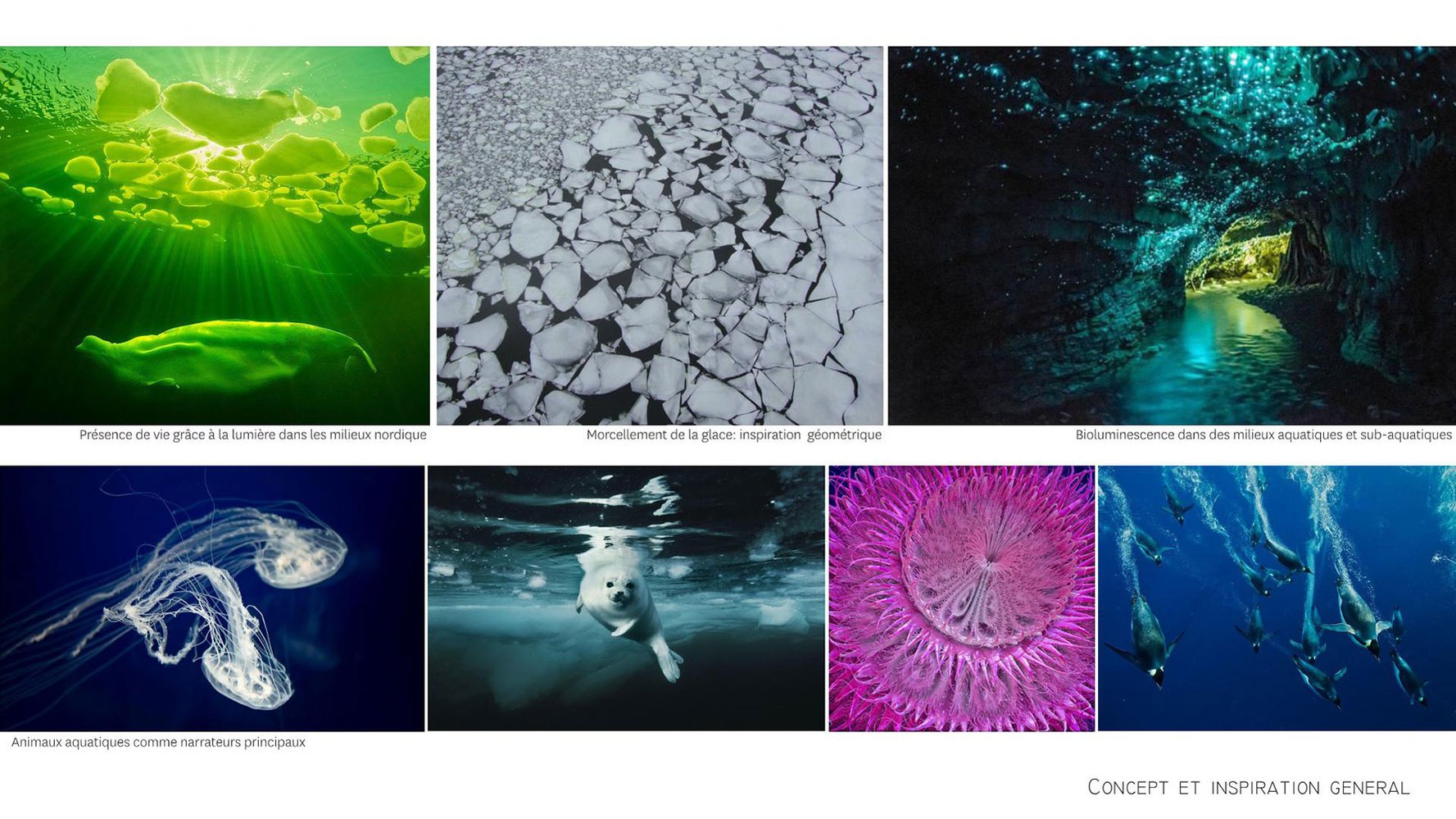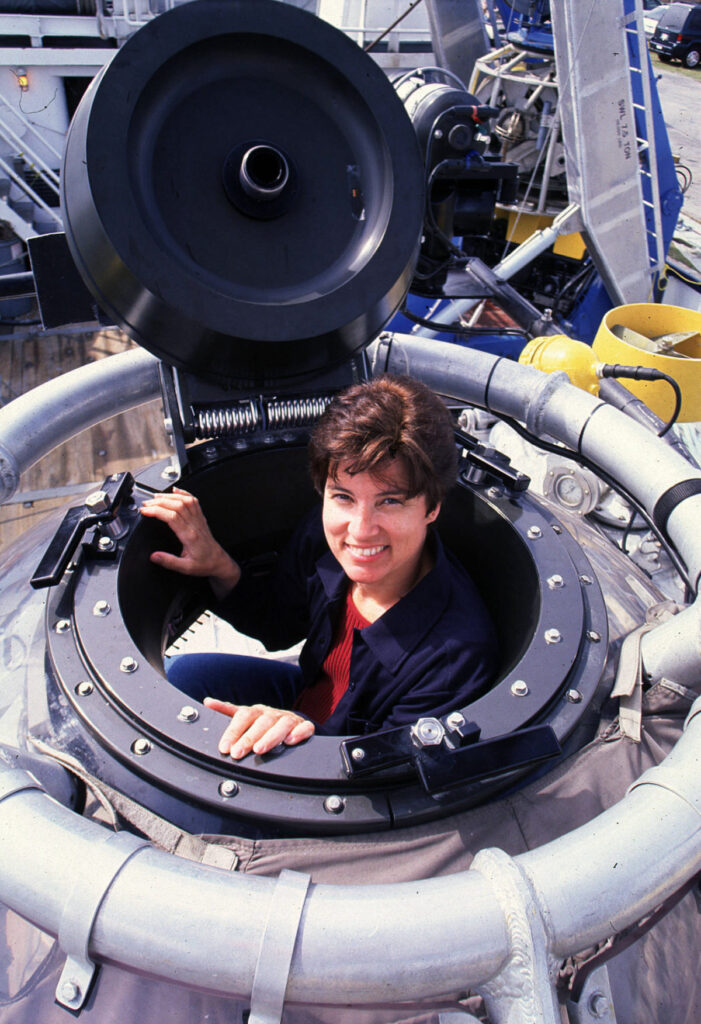Edie Widder is a oceanographer renowned, recognized for its innovative research on bioluminescence. Director of the bioluminescence department at the Harbor Branch oceanographic center from 1989 to 2005, she distinguished herself through her unprecedented explorations in the marine abyss. Thanks to a sensitive camera who equips his device, the BathyBot, Widder was able to observe and document fascinating light phenomena. His work has provided a better understanding of how certain deep-sea animals use bioluminescence to survive, camouflage themselves or attract prey. By shedding light on these behaviors, it offers us valuable insight into the secrets of aquatic life and the mysteries that reside in the dark depths of the oceans.
|
IN BRIEF
|

At the crossroads of science and passion, Edie Widder emerges as an emblematic figure of marine biology, fascinated by the phenomenon of bioluminescence. Born with an insatiable curiosity for the ocean depths, she spent nearly two decades heading the bioluminescence department at Harbor Branch Oceanographic Institute, from 1989 to 2005. Her role as director was instrumental in advancing our understanding of the mysterious lights that emanate from sea creatures.
Edie Widder is not only an accomplished scientist; she is also a pioneer in exploring the unknown. By showcasing a blend of technical expertise and innovation, she helped pioneer revolutionary tools such as the camera BathyBot, which allows bioluminescence to be captured in the ocean abyss. Thanks to this technology, she was able to observe and analyze the luminous behavior of marine animals which, until then, remained hidden in the darkness of the depths.
Bioluminescence is a fascinating and complex phenomenon that is not limited to simple light emitted in the depths. According to Widder, this light plays several essential roles in the marine ecosystem, including for hunting and defense. Bioluminescent species have special chemical mechanisms that allow them to produce light, often through the presence of bacteria marines. By shedding light on these creatures, Widder helps us better understand their ecology and their adaptation to the hostile environment of the abyss.
For Worthy, it is crucial to take into account the impact of human activities on these fragile ecosystems. By conducting research on the marine toxicity, Edie Widder highlights the dangers of pollution and climate change on ocean habitats. His commitment to conservation is palpable in his scientific approach. By sharing her findings with the general public, she hopes to raise awareness about the importance of protecting the seas.
Widder is also a recognized speaker, sharing her findings at prestigious events and conferences around the world. His charisma and passion for marine biology shines through in his presentations, captivating audiences with tales of exploration by the glow of bioluminescent creatures. His book, “ Below the Edge of Darkness ”, is an autobiographical story which sets out his adventures and discoveries, making the fascinating world of the depths accessible to everyone.
As co-founder of theOcean Research and Conservation Association, Edie Widder has expanded her scope beyond scientific research, becoming actively involved in protecting the oceans and educating future generations of scientists. Through her efforts, she embodies not only the spirit of discovery, but also that of conservation. Her contributions have already left an indelible mark on the field of marine biology, and her influence continues to grow as she unlocks the still-hidden mysteries of the oceans.
Renowned oceanographer Edie Widder has dedicated her career to exploring the mysterious depths of the ocean and unlocking the secrets of bioluminescence, a fascinating phenomenon that allows certain marine organisms to produce light. Through her innovative research and discoveries, she has not only enriched our understanding of this phenomenon, but also helped raise public awareness of marine biodiversity and the environmental challenges facing the oceans.
Table of Contents
ToggleEdie Widder’s contributions to bioluminescence
Between 1989 and 2005, Edie Widder headed the department of bioluminescence at the Harbor Branch Oceanographic Center. Her expertise has allowed her to become an authority in her field, and she has played a key role in advancing scientific knowledge of this phenomenon. As co-founder of the Ocean Research and Conservation Association, she also applies her discoveries to promote the conservation of marine ecosystems.
A revolutionary tool for exploring the abyss
To carry out her research, Edie Widder has developed cutting-edge instruments, such as an ultra-sensitive camera bioluminescence which equips “BathyBot”, an underwater robot. This revolutionary tool made it possible to observe and analyze bioluminescent organisms in their natural habitats, providing unique perspectives on their behavior, ecology and adaptations to the extreme conditions of the ocean depths.
The various roles of bioluminescence
Studies conducted by Widder revealed that bioluminescence plays several roles in the marine ecosystem. This includes communication between species, hunting, and even defense against predators. In an environment as dark as the abyss, this ability to emit light proves crucial for the species that live there, allowing interactions vital for their survival.
A Journey into the Dark: Below the Edge of Darkness
In his book, Below the Edge of Darkness, Edie Widder invites us to accompany her on a fascinating journey into the heart of oceanic darkness. Through her stories, she shares not only her scientific discoveries, but also her personal reflections on the mysterious beauty of the ocean and the importance of preserving this natural wealth.
Promote awareness of bioluminescence
For Edie Widder, the bioluminescence is more than a simple biological phenomenon; it is a powerful educational tool. The research and initiatives it supports aim to raise public awareness of the wonders of the ocean and the importance of its protection. This awareness is all the more necessary in the face of the growing threats posed by climate change and marine pollution.
To find out more
Edie Widder’s work and commitment reflect crucial environmental issues. To find out more about his research, you can visit the website NOAA Ocean Explorations or learn more about his biography on Wikipedia. Furthermore, his intervention on the bioluminescence during conferences such as those of Tufts Daily also deserves special attention.
Edie Widder, a key figure in modern oceanography, unveils the fascinating mysteries of bioluminescence. As director of the Department of Bioluminescence at the Harbor Branch Oceanographic Center from 1989 to 2005, she opened new avenues of exploration into the dark depths of our oceans. Through her research, she demonstrates not only the importance of this natural phenomenon, but also its revolutionary potential for marine science and conservation.
A pioneer of bioluminescence
Edie Widder is not just a scientist, but a true pioneer in the field of bioluminescence. She has dedicated her career to studying sea creatures that, through chemical reactions, transform substances into light. This natural phenomenon has often fascinated researchers, but Widder has taken it to the next level by integrating innovative technologies into his investigations. For example, it has developed tools like the “BathyBot”, a revolutionary underwater vehicle equipped with bioluminescence-sensitive cameras.
Applications of bioluminescence
Bioluminescence is not limited to a visual spectacle in the deep sea. According to Widder, it plays an essential role in the survival of deep-sea species. THE bioluminescent animals use this light to attract prey, defend themselves against predators or even communicate with each other. By understanding these mechanisms, we can better appreciate the complexity of the marine ecosystem and the interactions between different species. Beyond scientific curiosity, Widder shows how these discoveries could contribute to the fight against current environmental challenges.
A call to action for marine conservation
Edie Widder doesn’t just study the depths of the ocean; she also makes her voice heard for marine conservation. His work highlights the threats to marine ecosystems caused by human activities. The results of his research highlight the importance of knowing how to protect these precious environments to preserve biodiversity. By integrating ethical elements into its scientific research, it encourages future generations to interact responsibly with our planet.
The wonders of the abyss
In his book “Below the Edge of Darkness: A Memoir of Exploring Light”, Widder invites the reader on a fascinating journey into the deep sea. It explores a world where light takes on strange and captivating forms, revealing marine creations who live in places that few humans have been able to explore. Bioluminescence then becomes a language, a communication in the dark, and leads to a better understanding of the wonders hidden beneath the surface. Studies like those of Widder show that abyss are not only places of wonder, but also living laboratories where science can reveal priceless secrets.
Edie Widder’s work is more than just research; it is a transition towards increased awareness of our oceans and their capital importance for the planet. By illuminating the mysteries of bioluminescence, it embodies the future of the study of the oceans, combining science, conservation and wonder.









